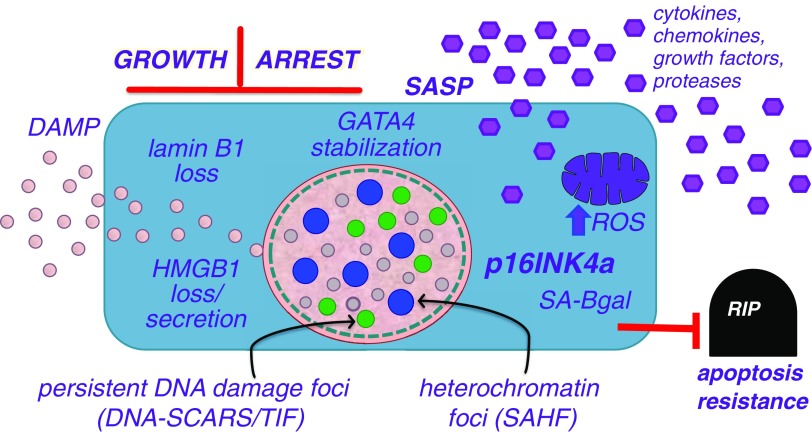Figure 1.
Senescence-associated markers and phenotypes. Cellular senescence causes cells to adopt a phenotype that includes an essentially irreversible arrest of cell proliferation (growth arrest) coupled to a secretory phenotype that includes numerous cytokines, chemokines, growth factors, and proteases (the senescence-associated secretory phenotype [SASP]) (39), as well as the alarmin HMGB1 (42). Senescent cells also upregulate expression of the cell-cycle inhibitor p16INK4a (5) and a neutral β-galactosidase (senescence-associated β-galactosidase [SA-Bgal]) (9), show increases in levels of reactive oxygen species (ROS) and the GATA4 transcription factor (15), and harbor nuclear structures termed senescence-associated heterochromatic foci (SAHF) (11) and DNA segments with chromatin alterations reinforcing senescence (DNA-SCARS) (13). Finally, senescent cells acquire resistance to apoptosis, making them susceptible to drugs that inactivate proapoptotic proteins (23, 24). DAMP = damage-associated molecular pattern; HMGB1 = high-mobility group B1 protein; TIF = telomere dysfunction-induced foci.

